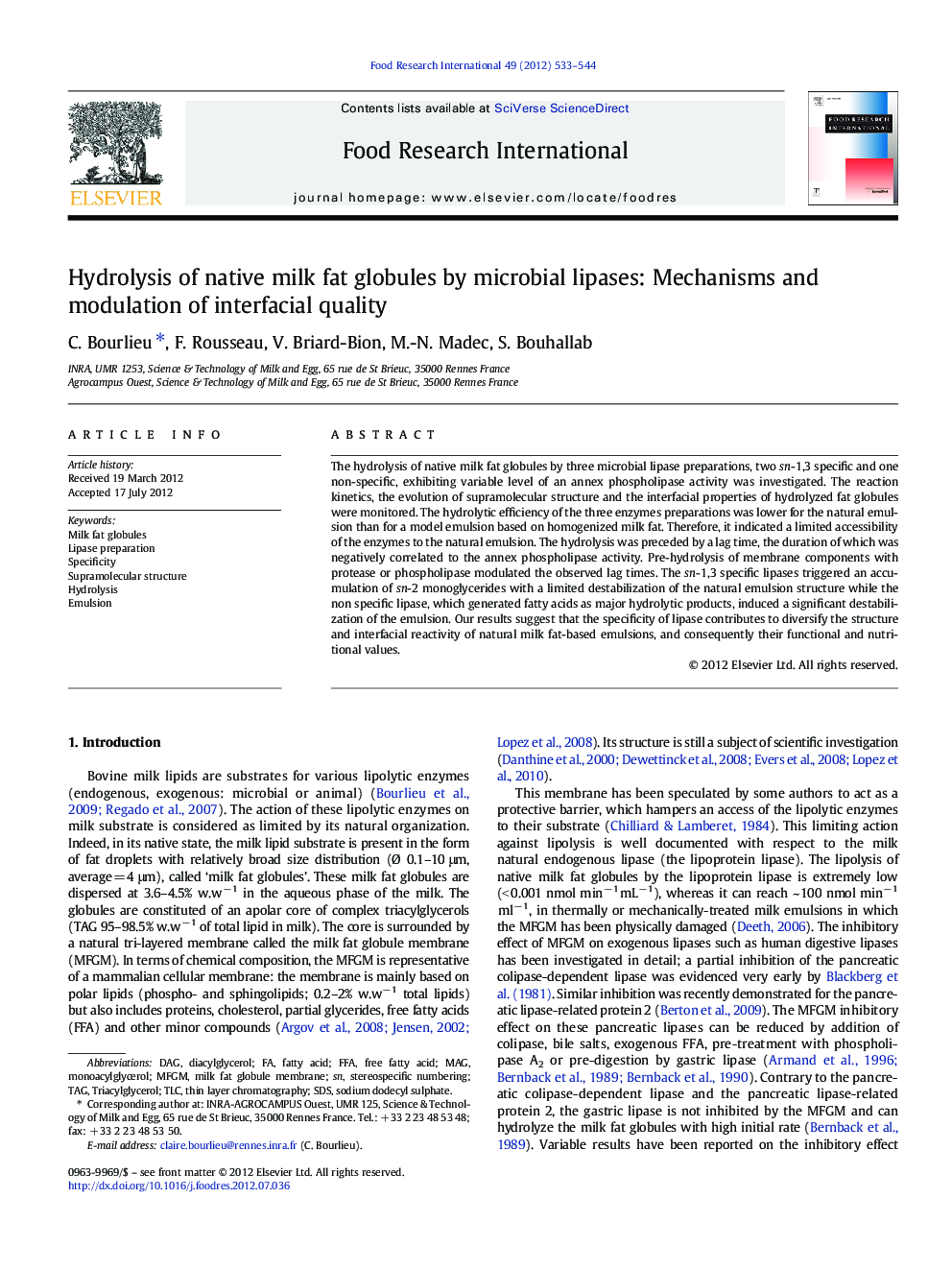| Article ID | Journal | Published Year | Pages | File Type |
|---|---|---|---|---|
| 6399193 | Food Research International | 2012 | 12 Pages |
The hydrolysis of native milk fat globules by three microbial lipase preparations, two sn-1,3 specific and one non-specific, exhibiting variable level of an annex phospholipase activity was investigated. The reaction kinetics, the evolution of supramolecular structure and the interfacial properties of hydrolyzed fat globules were monitored. The hydrolytic efficiency of the three enzymes preparations was lower for the natural emulsion than for a model emulsion based on homogenized milk fat. Therefore, it indicated a limited accessibility of the enzymes to the natural emulsion. The hydrolysis was preceded by a lag time, the duration of which was negatively correlated to the annex phospholipase activity. Pre-hydrolysis of membrane components with protease or phospholipase modulated the observed lag times. The sn-1,3 specific lipases triggered an accumulation of sn-2 monoglycerides with a limited destabilization of the natural emulsion structure while the non specific lipase, which generated fatty acids as major hydrolytic products, induced a significant destabilization of the emulsion. Our results suggest that the specificity of lipase contributes to diversify the structure and interfacial reactivity of natural milk fat-based emulsions, and consequently their functional and nutritional values.
⺠Microbial lipase accessibility to milk fat natural globules is limited. ⺠The specificity of microbial lipases modulated the kinetics of milk fat hydrolysis. ⺠Microbial lipase annex phospholipase activity limited initial lag time. ⺠Sn-1,3 specific microbial lipases induced lower destabilisation of the emulsion. ⺠Lipase specificity is a tool to diversify the structure and interface of emulsion.
